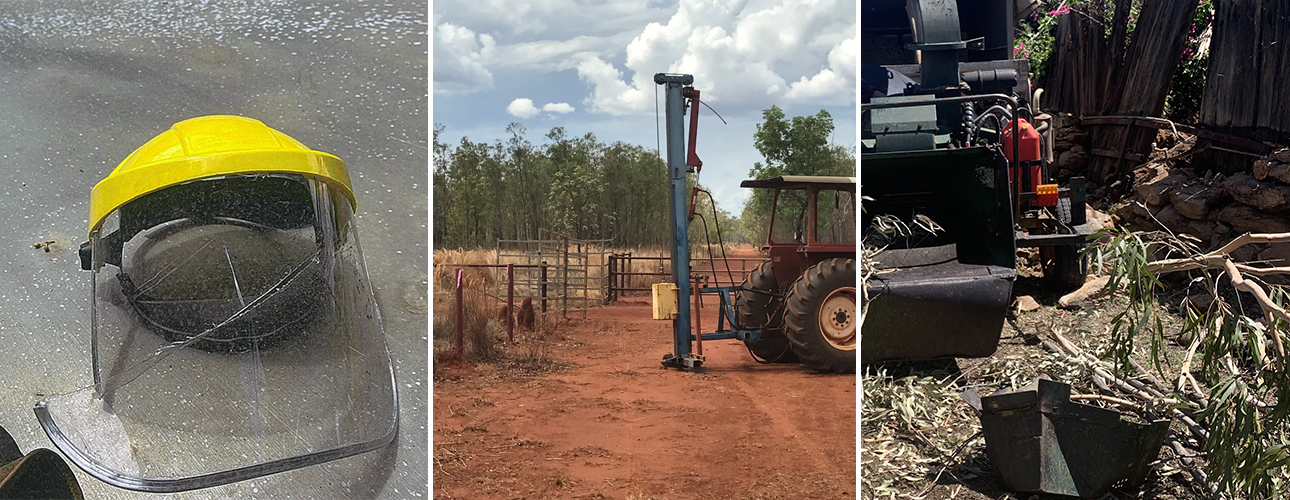Workers seriously injured using machinery and power tools (plant)
Background
Three workers have been seriously injured using either machinery or power tools in separate incidents.
Incident One
On Friday 30 September in Alice Springs, a worker suffered serious lacerations using an angle grinder. At the time of incident, the worker was grinding metal without the side handle fitted when the angle grinder kicked back into the worker’s face.
Incident Two
On Tuesday 15 November in the Katherine Region, a worker on a cattle station suffered a serious crush injury to their arm while undertaking fencing work. The worker was using a post driver attached to a tractor to hammer fence posts into the ground, when the incident occurred. Due to the extent of the injury, the worker’s arm required amputation.
Incident Three
On Saturday 19 November in Alice Springs, a worker within the vicinity of an operating wood chipper was seriously injured when they were hit by part of the machine. A branch was being fed through the wood chipper when it jammed and hit the grinding disc guard, causing the guard to come loose and hit the worker. The worker suffered fractures and internal injuries.

Disclaimer
The above information is based on preliminary findings from NT WorkSafe’s initial enquiries. Enquiries are ongoing to determine the cause of the incident and the appropriate regulatory response.
Safety Information
Plant, which includes machinery and power tools, are a major cause of work-related death and serious injury nationally. There are significant risks associated with using plant including but not limited to:
- Entanglement, cutting, stabbing, puncturing, shearing, de-gloving or amputation by moving machine parts, and
- Crushing from uncontrolled or unexpected movement of mobile plant, being thrown off, tipping or rolling over, being trapped between mobile plant and fixed structures, or material falling from the mobile plant.
NT WorkSafe strongly urges all workplaces undertaking similar activities to ensure the following measures are in place, and that they are effective:
- Undertake Hazard Identification, Risk Assessment and Control (HIRAC) beginning by identifying hazards related to the use of plant in the workplace using the Hazard Checklist, which is Appendix C of the Managing the risks of plant in the workplace Code of Practice
- Consider available control measures and implement the control measures that most effectively eliminate or minimise the risks so far as is reasonably practicable
- Follow the Northern Territory’s Work health and safety consultation, cooperation and coordination Code of Practice, and consult your workers and their health and safety representatives when deciding how to manage the risks in the workplace, including when reviewing and making changes to existing processes
- Discuss the hazards identified and the control measures you have implemented at your next toolbox talk or team meeting
- Have systems which ensures all:
- Workers and duty holders have information about the plant which enables them to fulfil their responsibilities in managing the risks associated with the plant in the workplace
- Including understanding and following the manufactures safe operating procedures
- Persons in the workplace have appropriate training and instructions necessary to protect them from risks to their health and safety related to the use of plant in the workplace
- Plant requiring registration, and all work requiring licencing is compliant
- Persons in the workplace have been supplied with the appropriate PPE, and the PPE is used
- Check your maintenance schedules and ensure that all plant and machinery is maintained and repaired according to the manufacturer’s specifications
- Ensure workers complete pre-start checks before plant and machinery are operated, and
- Ensure young and/or inexperienced workers have appropriate supervision.
- Workers and duty holders have information about the plant which enables them to fulfil their responsibilities in managing the risks associated with the plant in the workplace
Mobile Plant
If the machinery being operated is mobile, such as a forklift or crane. Ensure the following measure is in place after you have undertaken a HIRAC.
Complete the Traffic control measures checklist and Traffic hazards checklists.